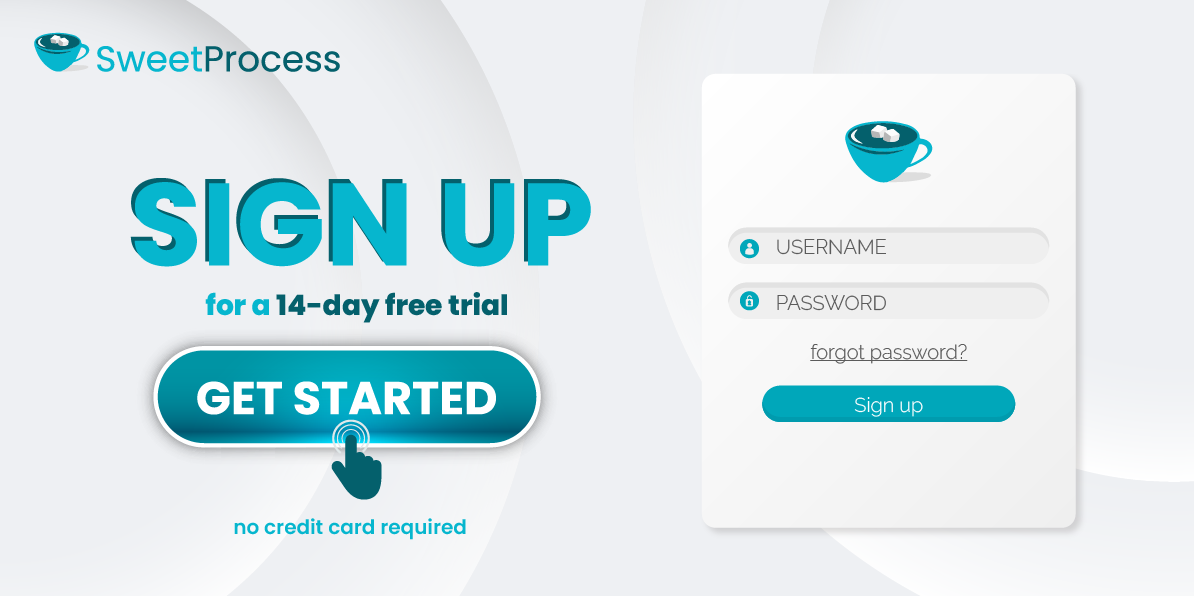Last Updated on June 28, 2025 by Owen McGab Enaohwo
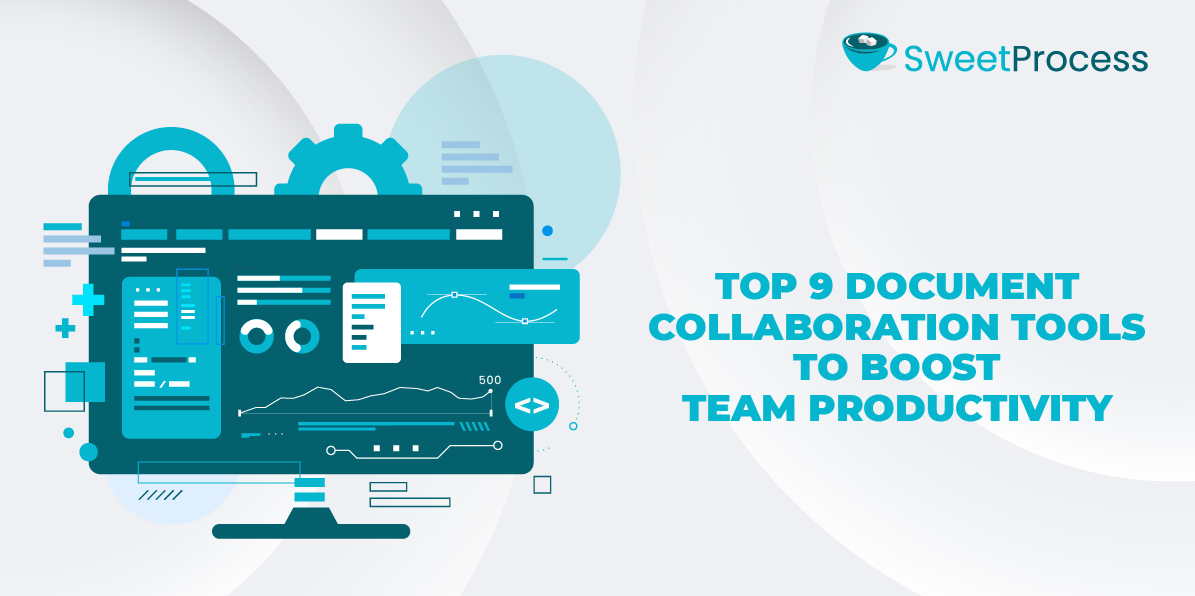
Six out of ten remote employees say they’d start job hunting if telework is no longer an option. This statistic represents a shift in how teams expect to work today. As remote and hybrid work become the norm, businesses must invest in collaboration tools that make it easier to share knowledge and manage documents.
With a document collaboration tool, multiple team members can co-author, comment, and manage documents in real time from anywhere, keeping projects on track and everyone in sync. Managing a remote team becomes more seamless with a structured tool that everyone can access. Your team can become productive since they have a reference point for all their work.
But which document collaboration tool is right for your business? In this guide, we’ll examine several tools, highlight their key features, and recommend best practices to help you choose the one that fits your team’s unique needs.
Table of Contents
9 Best Document Collaboration Tools
6 Core Features of Document Collaboration Tools
Collaborate on Your Business Documents With SweetProcess
Document Collaboration Best Practices
Which Document Collaboration Tool Is Right For Your Company?
9 Best Document Collaboration Tools
For remote working to be effective, you must select the right document collaboration tool. It needs to align with your organizational needs, workflow style, and team size; otherwise, you’ll incur unnecessary expenses. This section is for you if you are still considering which option to pick from the multiple tools available today.
We’ve rounded up nine of the best document collaboration tools to get you started:
1. SweetProcess
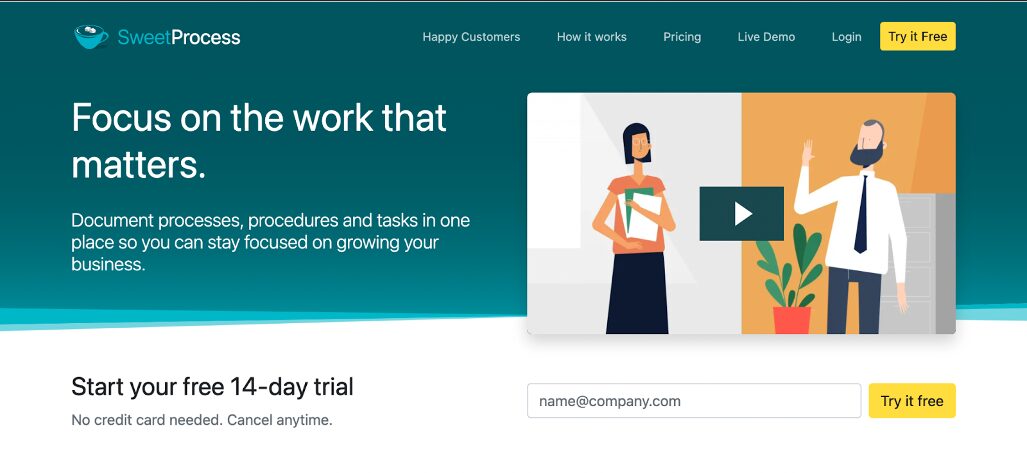
SweetProcess is an all-in-one collaboration tool built for teams that want to streamline how they create and manage standard operating procedures (SOPs), workflows, and internal documentation. With this software, you can document your tasks and processes in a centralized location, allowing you to focus on business growth activities.
The SweetProcess knowledge base is ideal for remote teams since all company information is accessible to all employees. You can use this tool whether you have a startup or a multinational business. It can be easily integrated into your operations teams, HR departments, or customer support team to eliminate tribal knowledge and increase team accountability.
Core Features of SweetProcess
Here are the features your remote or hybrid team can access when they use SweetProcess:
- Real-time document collaboration: With SweetProcess, your team members can update and edit documents simultaneously. For instance, when a supervisor or departmental head updates the latest procedures, every employee can see them and suggest changes.
- Assign tasks and monitor progress: If you have one team on site and the other one working remotely, you need a structured method to assign and monitor tasks. Document collaboration software like SweetProcess allows you to turn your procedure or process into an actionable task, assign it to the right person, and track its status in real time.
- Seamless app integration: SweetProcess connects with over 1,000 business apps via Zapier and API, making it simple to sync with your existing tools. You can sync it with your existing CRM, project management tool, or HR system to keep processes connected.
- Custom knowledge base: You can use this tool to design a searchable, easy-to-navigate hub for all company procedures and policies. This centralized resource helps teams find what they need fast, reducing confusion and saving time.
- Embed files and videos: If your teams are in different locations, they might need more than text to understand some procedures and processes. SweetProcess allows you to add videos, images, and tables to every step to break it down much better.
- Version history: When multiple employees are working on a document, there will be several changes. With the version history, you can view every edit to revert to any version at any time.
SweetProcess Pricing
SweetProcess offers a uniform and transparent pricing plan for all organizations. Once you sign up for a new account, you can use it for free for the first 14 days. After this period lapses, pricing starts at $99/month for a team of up to 20 active users. You’ll be charged $5 for each additional team member. Custom pricing is also available if you have fewer than 20 employees.
2. Google Docs
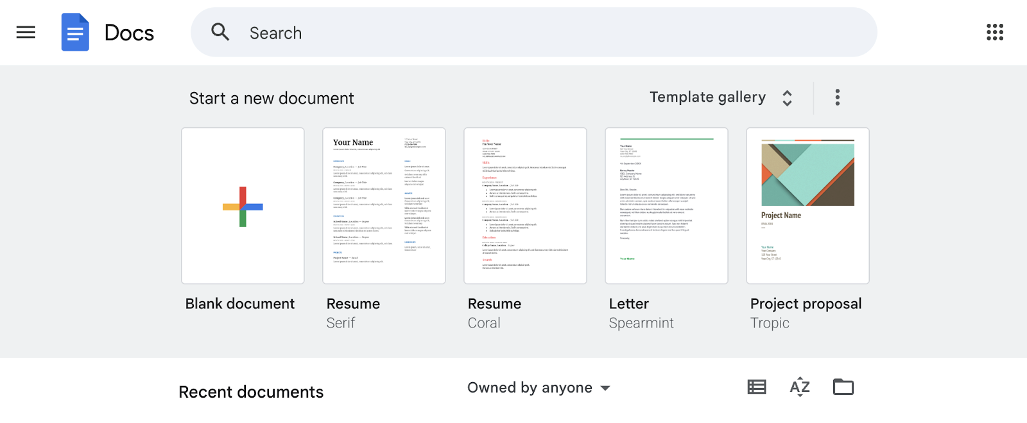
Overview of Google Docs
As one of the popular cloud-based documentation tools, Google Docs is known for its simplicity and real-time collaboration features. This tool is part of the Google Workspace suite and is used by teams to edit and create documents simultaneously, whether they are in the same office or across different time zones.
This tool can be useful for remote teams, freelancers, or businesses already using Gmail and Google Drive for business operations.
Features of Google Docs
- Cloud-based access: Since the documents are stored in the cloud, all team members can access and update them on the go.
- Live co-editing: You won’t have to merge different files; multiple users can work on the same document at once. The edits are saved in real time for effective document collaboration.
- Comments and suggestions: In case an employee has suggestions, they can add the comments without altering the original content. This way, teams can collaborate on content reviews and approvals.
- Permission controls: The tool has features to limit who can view, edit, or access company documentation. This feature ensures that only the right stakeholders work on the documents.
- Integration with Google Workspace tools: Google Docs easily integrates with tools like Gmail, Google Drive, Google Calendar, and Google Meet, enhancing productivity.
Google Docs Pricing
You can use Google Docs for free as long as you have a Google account. However, if you need more features for your business, you’ll have to pay for Google Workspace plans, which start at $6.30/user/month. These premium plans come with additional storage, an AI assistant, security controls, and more administrative features.
3. Dropbox Paper
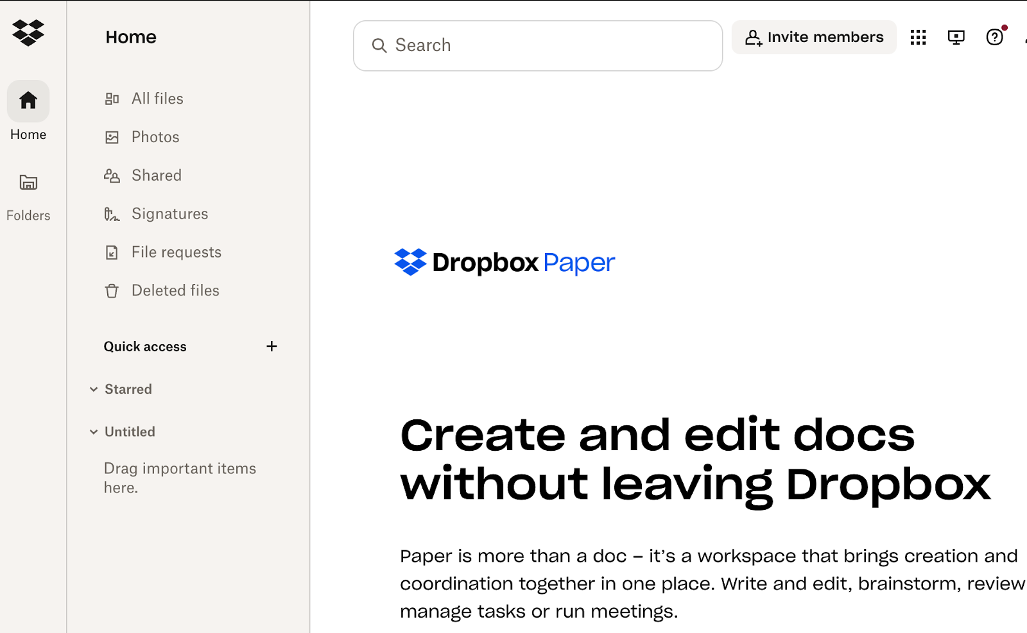
Overview of Dropbox Paper
Another document collaboration tool to consider is Dropbox Paper, which allows you to create and edit company documentation directly on the Dropbox platform. This collaborative workspace is ideal for teams that want to brainstorm, draft project plans, review designs, and manage business tasks in one location.
Apart from text, Dropbox Paper allows you to add live links to videos, audio, and photos to your documents. These features come in handy for remote teams and creative employees who prefer an intuitive interface.
Features of Dropbox Paper
- Document invites: To collaborate with your employees or external stakeholders, you can invite them to view, edit, or comment on your document.
- Shared folders: This feature allows you to make your documents discoverable to the right team members.
- Real-time collaboration: If you’re working simultaneously with other team members, you can add @mentions to assign a task or bring attention to a particular item.
- Multimedia elements: You can add videos from YouTube, Vimeo, or audio from Spotify to give your content more context.
- Mobile access: Your team can create and edit the Paper Docs from their mobile devices, making it ideal for teams on the move.
Dropbox Paper Pricing
The basic Dropbox Paper plan is free for all users. This option syncs for three devices and saves all your files locally. However, if you pay for the premium Dropbox Plus at $11.99/month, you get more storage and access to your company documentation from any device. This option comes with a 30-day free trial period.
4. Notion
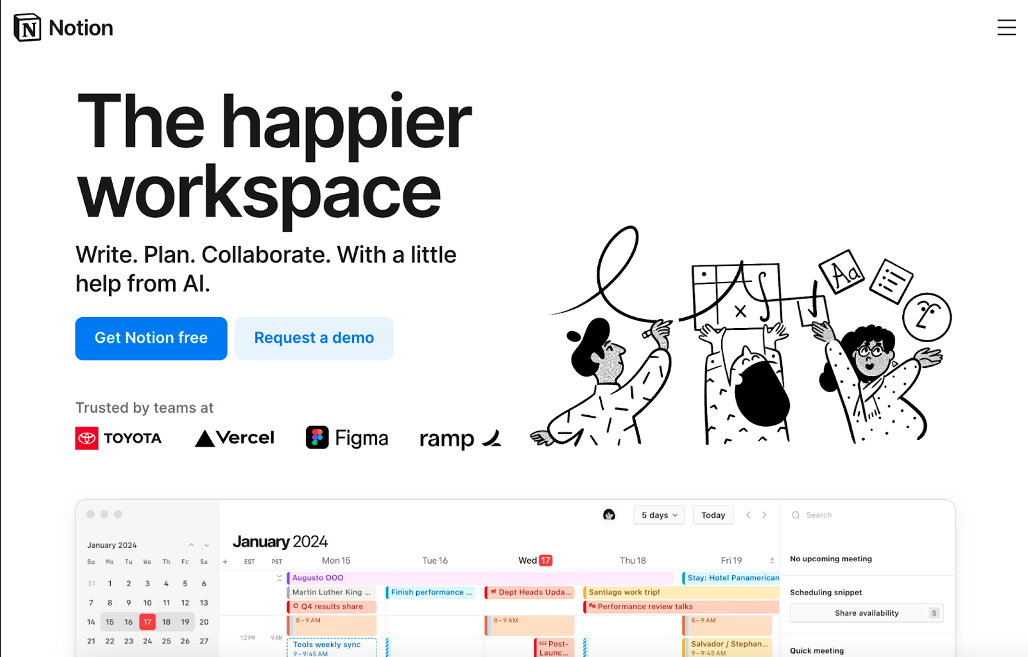
Overview of Notion
This collaborative workspace allows employees to create documents, take notes, and manage databases and wikis on one platform.
Notion works for different types of users, especially startups or remote employees, because you can centralize both structured and unstructured content in one place.
You can use this tool to build a company knowledge base that holds all the processes and procedures that your team needs to know. These documents will be essential for project tasks since employees have a reference point.
Features of Notion
- Content blocks: This feature makes it easy to add images, text, and checklists to make your documents more dynamic.
- Wikis and knowledge hub: Notion centralizes company knowledge; therefore, your team can access SOPs and internal documentation from one platform.
- Pre-built templates: You don’t have to create documents from scratch. Notion has templates that speed up your workflow.
- Sharing controls: Managers can set granular access for teams or individuals to ensure that only the right people can view or edit documents.
Notion Pricing
With Notion, you can opt for the free plan if you have a small team. The premium Plus plan costs $10/per seat/month and covers up to 100 guests. If you have a bigger team of over 250, you can subscribe to the business plan for $15 per user/ month. Alternatively, you can pay for the Enterprise option, which comes with a custom price.
5. Coda
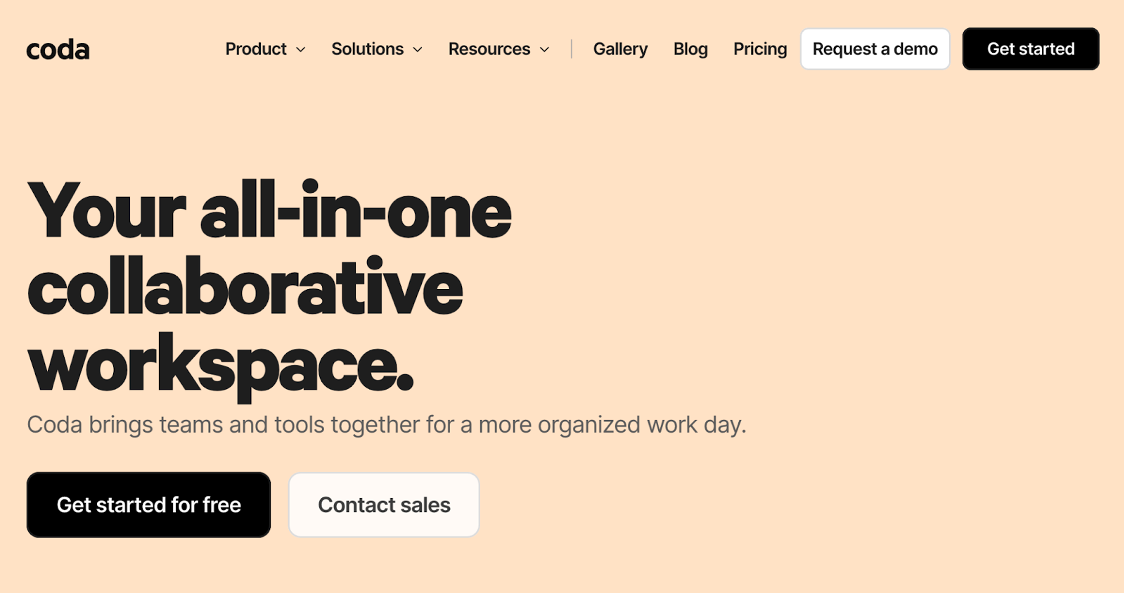
Overview of Coda
Coda is a collaborative workspace that teams use to manage projects from one place. With this platform, you get flexible documentation, structured spreadsheets, and applications all in a single platform. It’s versatile enough for your team to create interactive documents that make it easy to track data and collaborate.
This tool is ideal for project managers, product teams, and operations professionals who require more than just a traditional document editor.
Features of Coda
- Writeups: Coda allows multiple users to edit documents simultaneously, with changes reflected in real time.
- Interactive building blocks: Users can incorporate tables, buttons, and embedded media into their documents, transforming static pages into interactive workspaces.
- Trackers: Instead of using spreadsheets, you can use this feature to personalize your company information from anywhere.
- Coda Brain: This Coda AI platform helps teams find information much faster so that they can focus on important work.
Coda Pricing
You can start with the free plan if you have a small team. As you progress, you can opt for the premium Pro plan at $10/month/Doc Maker, which comes with more features like unlimited document size and advanced integrations. Additionally, you can choose the Team plan for$30/month/Doc Maker or request a custom quote for the Enterprise option.
6. Multicollab
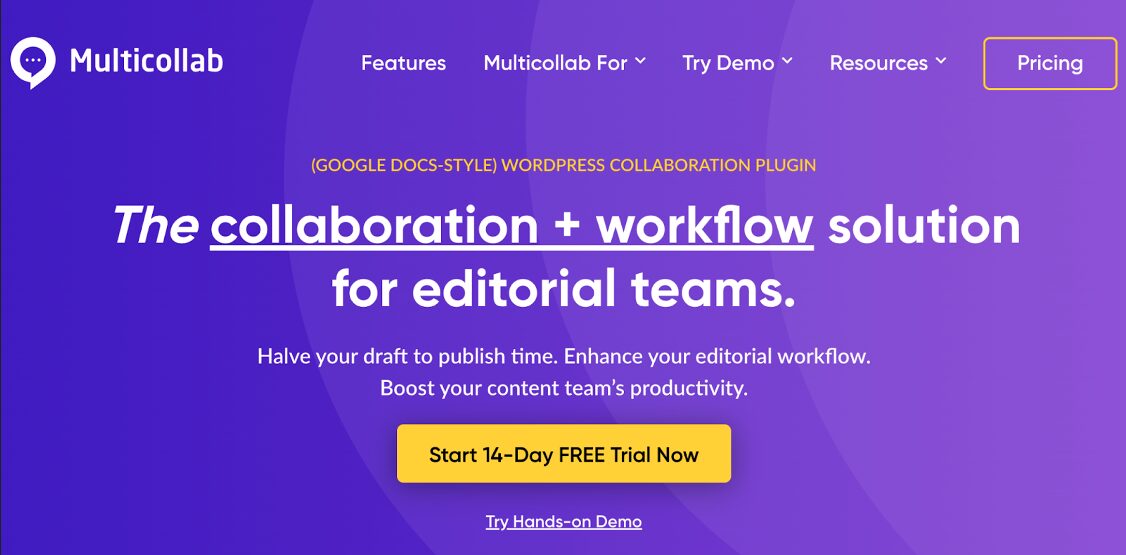
Overview of Multicollab
Multicollab is a WordPress plugin that enables you to collaborate with your editorial team. This tool has features like real-time co-editing, in-line commenting, and suggestion tracking within the familiar WordPress environment, eliminating the need to switch between external tools. Your team can comment, reply, and tag other employees directly on the platform.
This collaboration tool is designed for publishers, agencies, and media teams who want to streamline their editorial workflows. It’s ideal for different content teams, whether you have a few employees or hundreds.
Features of Multicollab
- In-line commenting: You can add comments directly to specific text or media elements in a post for easier feedback and discussions.
- Real-time co-editing: Multiple team members can simultaneously edit posts and pages within WordPress, and these changes will be visible in real time.
- Suggestion mode: Thanks to the Google Docs-style collaboration features, users can propose edits without altering the original content. These suggestions can then be reviewed and accepted or rejected by collaborators.
- Notifications: When an employee comments or replies on a document, the recipient receives an email alert to update them on progress.
- Custom permission: For sensitive documents, you can add permissions to decide which team members can add or resolve comments.
Multicollab Pricing
Multicollab has three pricing plans. The Lite option costs $299/year while the Pro plan costs $749/year. You can also opt for the Enterprise plan, which starts at $10,000/year, and get custom pricing. Multicollab also offers a 14-day free trial for users to explore its features before committing to a paid plan.
7. Lex
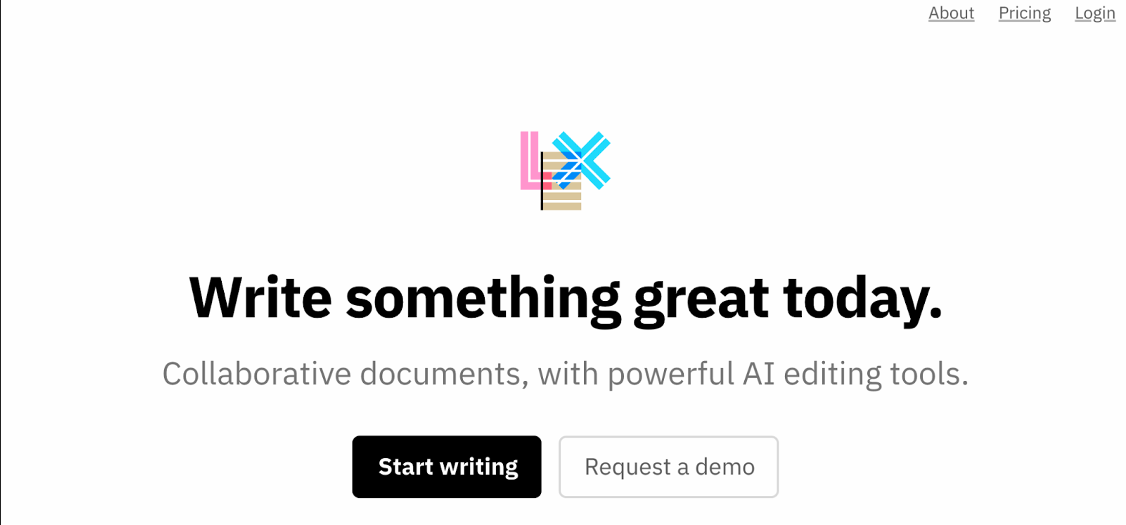
Overview of Lex
Lex is a collaborative tool with advanced AI capabilities designed for individuals and company teams. With a minimalist interface, this tool will help your team draft, edit, and refine content directly on the same platform.
Thanks to its collaborative features, Lex is ideal for different professionals, including marketers and writers, looking for a platform that offers intelligent writing assistance.
Features of Lex
- Live collaboration: Once a team member logs in, they can view what the others are typing in a document.
- AI writing assistant: Lex users can get real-time suggestions and feedback from the AI assistant to improve content quality.
- Version control: Lex automatically tracks document changes, allowing users to view and revert to previous versions as needed.
- Command shortcuts: You can use keyboard commands to quickly access features like heading formatting and list creation.
- Mobile accessibility: Lex is accessible via mobile web browsers, enabling users to write and collaborate on the go.
Lex Pricing
You can start with the free plan that gives you access to basic features. However, if your team requires advanced functionalities like enhanced AI capabilities and more customization options, Lex offers a Pro plan at $18/month.
8. Document 360
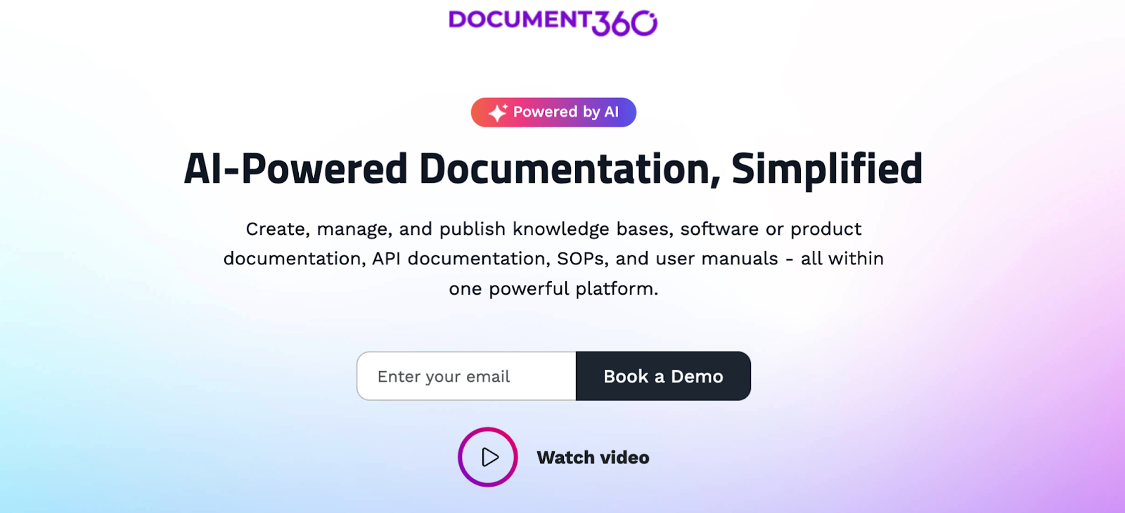
Overview of Document360
If you are looking for a cloud-based tool to manage your product or software documentation, you can consider Document360. This software helps teams manage, create, and publish internal and external documentation, including user manuals, SOPs, and API documentation. It’s easy to use and navigate; therefore, it can be used by organizations of all sizes.
As a knowledge base platform, Document360 holds all your company information in a centralized location so that your team has a single source of truth.
Features of Document360
- Advanced content editor: There are three editors available for your team to create documentation in different formats.
- Multiple integrations: Document360 seamlessly integrates with business tools like Slack, Microsoft Teams, and Zendesk, which enhances your workflow.
- Access controls: As you draft your collaborative documents, you can define the user roles and permissions to secure your company information.
- Advanced analytics: The Document360 dashboard provides detailed insights into the search behaviors or popular articles for better strategy development.
Document360 Pricing
Document360 offers three pricing tiers to accommodate different business needs. The Professional plan is designed for growing teams. The Business plan is ideal for mid-sized businesses and offers more advanced features. Alternatively, you can subscribe to the Enterprise plan if you have a large organization with a wide range of needs.
9. Zoho WorkDrive

Overview of Zoho WorkDrive
Another document collaboration tool to consider is Zoho WorkDrive. This platform provides a safe and shared workspace for your team to brainstorm ideas and document them. The distinct interface boosts collaborative document editing; therefore, multiple users can contribute to a document simultaneously.
Additionally, this tool integrates with multiple business apps; therefore, your team can handle all the documentation needs from one platform.
Features of Zoho WorkDrive
- Team folders: You can create exclusive shared spaces for specific teams or projects for better collaboration.
- Zoho Office suite integration: Users can also collaborate on documents, spreadsheets, and presentations directly within WorkDrive using Zoho Writer, Sheet, and Show.
- Granular access controls: This tool allows you to assign specific roles and permissions to employees.
- Desktop and mobile apps: With these apps, you can manage your files on the go, which enables online collaboration from anywhere.
Zoho WorkDrive Pricing
Zoho WorkDrive offers flexible pricing options. The Starter plan will cost you $2.50/user/month for a minimum of three users. You can access more storage by subscribing to the Team plan at $5/user/month or the Business plan at $10/user/month.
6 Core Features of Document Collaboration Tools
The best document collaboration tools go beyond basic editing. They provide a platform for teams to collaborate and maintain consistent documentation. Here are the six essential features that you should look out for:
1. Real-Time Co-Editing
For collaboration to be effective, multiple team members should have the ability to work on the same document simultaneously. Real-time co-editing ensures everyone is on the same page, with updates appearing instantly for all users.
For instance, if your team is working on a procedure, they can use SOP management software that eliminates the delays of back-and-forth drafts. This way, your team is working on the same document, avoiding version conflicts.
This feature became a game-changer for Turkstra Lumber, a building materials supplier in Canada. Before adopting SweetProcess, their documentation processes were manual, scattered, and inconsistent. Employees across multiple branches had different ways of handling the same tasks, leading to confusion and inefficiencies.
By introducing SweetProcess in their operations, Turkstra enabled their teams to co-edit procedures in real time, which significantly reduced bottlenecks and allowed them to standardize operations across all locations. Now, staff at any branch could contribute to and follow the same up-to-date documentation, which improved efficiency and accountability.
2. Commenting and Discussions

As you create or update company documents, team members will have different opinions. Therefore, you need an online collaboration tool that allows your team to communicate directly by asking questions, adding notes, or suggesting changes. These in-line comments reduce the need for external chats and emails that could lead to confusion.
Communicating within the document also speeds up approvals. Questions can be addressed much faster, so that you have the final document within a short time.
3. Tagging and Notifications
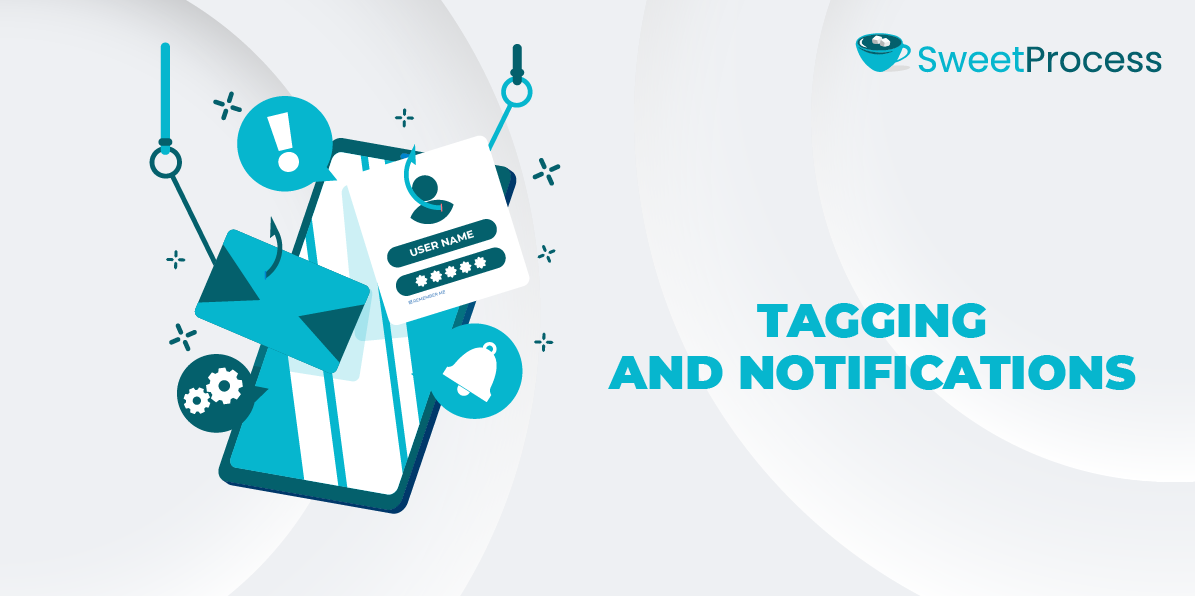
Imagine sending a team member an urgent message about a project task, and they miss it. This mistake could be costly to the team due to delays. To avoid this, you need a collaboration tool that enables you to mention and tag teammates directly in the comment section of the document.
Additionally, when you tag them, they should receive a notification immediately so that they can act. This feature is an essential part of task management, especially for cross-functional teams or organizations operating in multiple time zones. This way, your projects and approvals move forward without delay.
4. Teams and Access Control
Not every document should be accessible to everyone. Some company information is sensitive or designed only for senior management. In this case, you need a platform that provides permission settings to control who can view, edit, or comment on specific folders or documents. This feature protects data while ensuring the right people have the access they need to do their work.
Stone & Wood, a craft brewing company in Australia, struggled with this issue before they adopted SweetProcess. Their documentation was inconsistent and scattered across systems, with no clear way to manage who had access to what. This led to outdated procedures being followed, which affected production. Additionally, the teams were relying on tribal knowledge, which slowed down operations.
Tom, the quality assurance and sensory coordinator, decided to find a system that could work for the company and discovered SweetProcess. Since they adopted this tool, they can now:
- Group documentation into relevant team folders
- Assign access roles to ensure that only authorized team members can make changes
- Create an accessible knowledge base
- Easily update processes
They also improved consistency across departments, which gave the leaders peace of mind knowing documentation was secure and standardized.
5. Version Control and History Tracking

In collaborative environments, documents are constantly updated. However, in some cases, you might need to revert to the previous version for compliance purposes and audits. This is why you need a tool that provides version control and history tracking.
Once you update your procedures or policies, all the versions are saved automatically. With these features, managers can also monitor how documentation has evolved and identify areas that need clarification or streamlining.
6. Cloud-Based Accessibility
Cloud-based access is a non-negotiable with the rise in remote and hybrid teams. The document collaboration tool should be accessible on any device or location so your team can contribute whether they’re working at home or from the office.
This feature is essential for workflow management since distributed teams can’t afford downtime or miscommunication due to inaccessible documents. Therefore, as you search for a tool, consider whether it meets this need; otherwise, you’ll encounter barriers that will affect your team’s productivity.
Collaborate on Your Business Documents With SweetProcess
Now that you know what features to look out for in a document collaboration tool, it’s clear that SweetProcess meets all these parameters. In addition to documenting critical company information, this robust software allows you to standardize tasks and collaborate seamlessly with your teams and other stakeholders.
Here’s how you can use it to bring structure to your workflow:
Create Company SOPs, Workflows, and Policy Documents
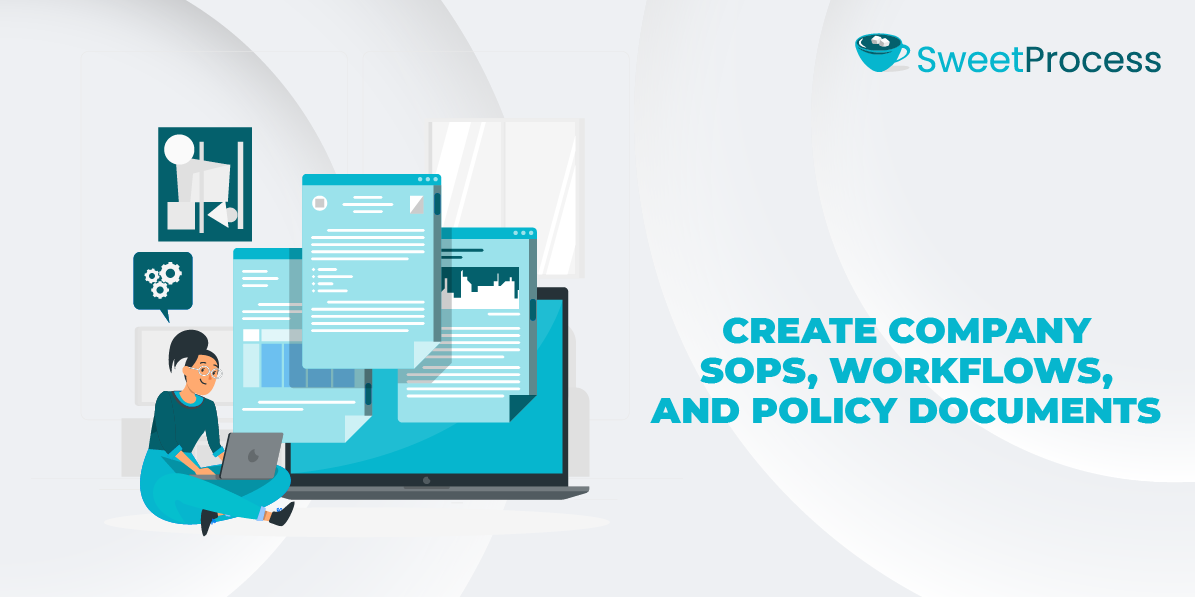
SweetProcess allows you to build a complete library of your organization’s most important documents. Think of all the day-to-day SOPs, HR policies, or customer service workflows your team needs to execute their roles. Every procedure can be broken down into clear, repeatable steps that your team can follow without confusion.
For instance, your HR team can create employee policies that new hires can reference from day one. When you log in to your account, you can choose to add an SOP or policy.

The policy will be visible on SweetProcess for every employee to access.
Real-Time Team Collaboration and Tagging
If your team works together on a campaign, they won’t have to keep sending emails back and forth. SweetProcess allows teams to co-edit documents together and suggest improvements in real time. Additionally, you can tag one another in the comments to receive instant feedback.
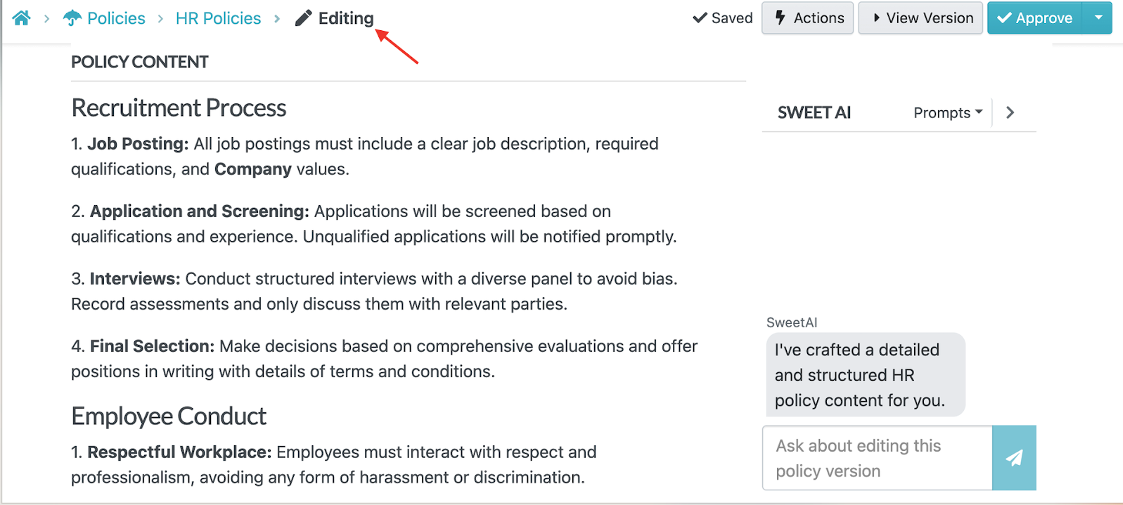
You can tag a teammate to bring something to their attention.
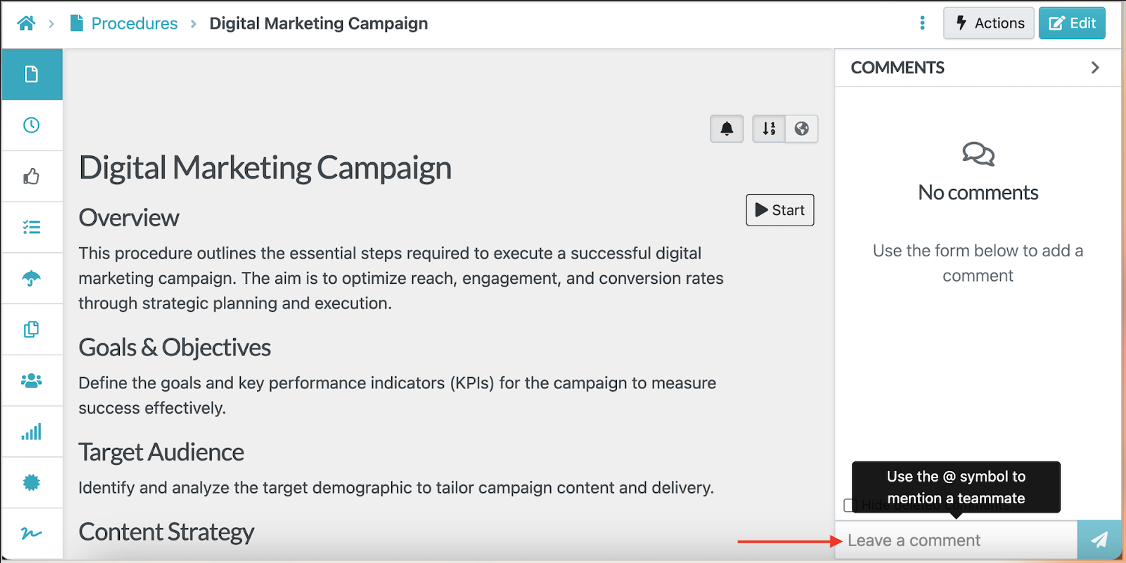
Team Feature for Access Control
SweetProcess makes it easy to manage which team members see what. For instance, you could group the employees into teams such as sales, operations, and finance to determine who views the company documents based on their roles.
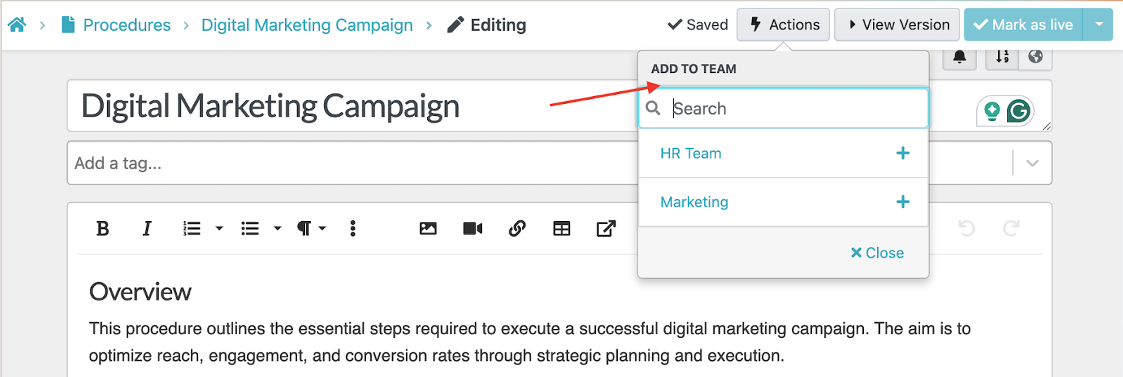
This ensures that confidential documents, like salary policies or internal audits, are only visible to the right people.
Version History To Prevent Loss of Edits or Progress
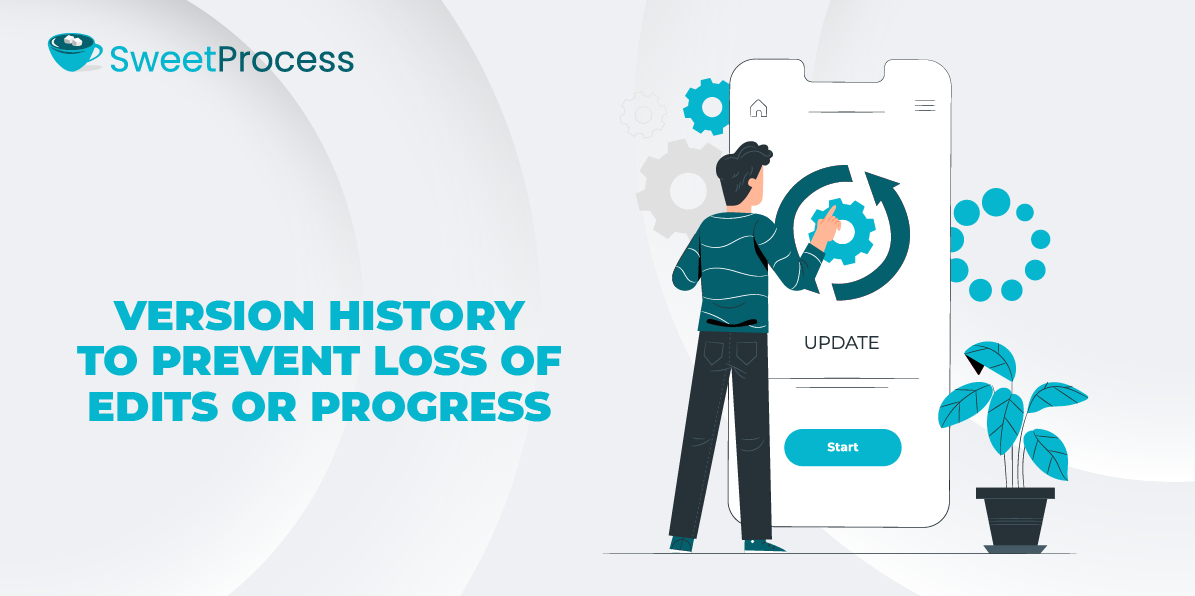
All edits on SweetProcess are automatically tracked, so your team never loses progress, even if multiple users make changes. For instance, if a procedure is updated incorrectly or you need to revert to a previous version for compliance reasons, the full version history is easy to access.

This feature ensures that company information is accurate at all times.
Centralized Access for Remote and Hybrid Teams
If your team works from different offices or collaborates across time zones, SweetProcess ensures that everyone has real-time access to the most up-to-date procedures. Once your team logs in to their accounts, they can view the latest SOP or policy from the dashboard.

This feature is essential for global teams managing high-volume operations or onboarding employees remotely.
Collaborate Seamlessly on Your Policies, Processes, and Procedures With Team Members and Guests

Do you need feedback from your contractors, clients, or auditors? SweetProcess allows you to assign policies and procedures to guest collaborators without a SweetProcess account.
They can view or comment on specific documents on your knowledge base without giving them access to your internal documentation. You can share a public knowledge base with them.
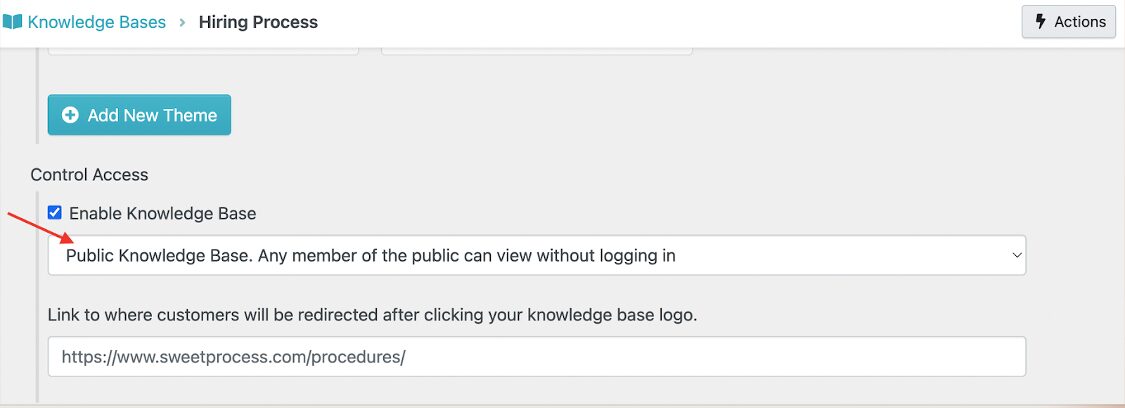
In addition, you can keep the internal one with your team.
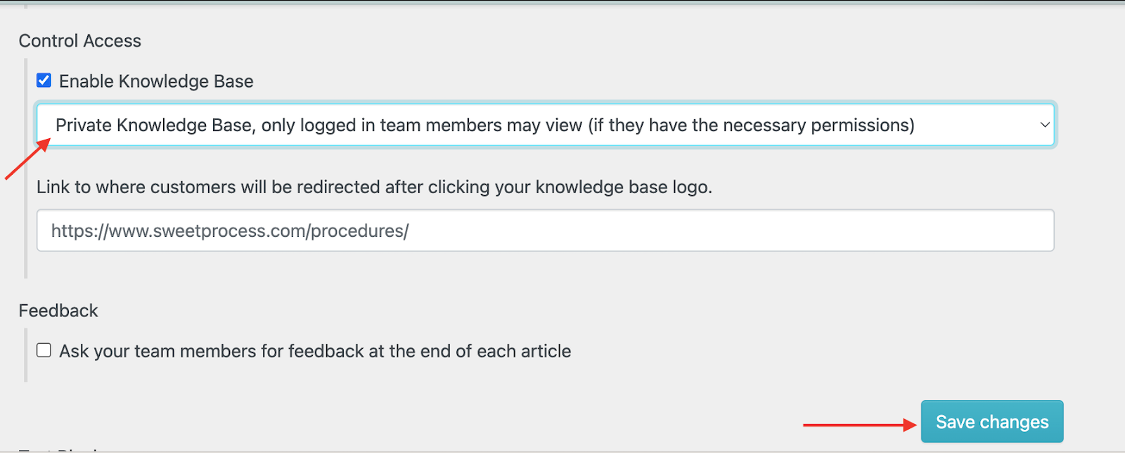
This makes it easy to work with external partners if you need to refine processes, approve content, or align on shared deliverables.
Document Collaboration Best Practices

Once you have picked the tool, you still need to utilize it well to enjoy the benefits. Here are the best practices that will guide your team while using tools like SweetProcess:
Set Clear Access Permissions and Editing Roles
You don’t want your sensitive company documentation to land in the wrong hands. Ensure that you set clear boundaries by defining who can access, view, or edit some documents. Role-based permissions ensure that only the right people make updates.
This way, you can protect your information and simplify accountability
Use Comments and Track Changes Effectively
When team members want to leave any feedback on the document, it’s best to add comments and suggestions that everyone can track. These comments can be related to any questions or clarifications that a team member needs to make. This way, you can justify decisions and roll back on any unwanted edits. In addition, this maintains transparency within the team.
PR Executive Katie Knipper shares,
“Revision history is incredibly helpful as you get closer to a final version of your document….remembering the why behind different edits keeps you focused on the goals your team would like to achieve, and you can review all of the document changes through that shared lens.”
Regularly Clean Up Outdated Drafts and Versions
As your team grows and your documentation library expands, you are more likely to have clutter. Moreover, having multiple outdated versions of the same document takes up storage and increases the likelihood that someone might use incorrect or outdated information.
It’s best practice to consolidate, archive, or delete older versions so that your team members always access the most recent version of the procedure or guide.
Train Your Team on Collaboration Etiquette and Expectations

As part of your employee training, you should properly educate everyone on the best way to collaborate on documents. For instance, you can train them on how to:
- Provide constructive comments
- Use version control
- Tag the right people
- Write in a clear and standardized style
Document specialist Adnan PKT shares the same sentiments by encouraging organizations to educate their team members on how to handle sensitive information to maintain document security. This way, you achieve collaboration while boosting the integrity of your process.
To keep your team informed, you can use your workflow management software to create internal guides with these rules.
Facilitate Communication With User Tagging
User tagging, such as @username, boosts your workflow. When you tag a team member in a comment, they get notified instantly, so they don’t miss anything. This approach speeds up team collaboration and creates clarity about who needs to do what.
The best team collaboration tool will provide real-time notifications to keep teams responsive. With this, you can reduce unnecessary follow-ups across email or Slack that take up time.
Choose the Right Tool
Even the best practices won’t matter if your tool is not aligned with your needs. The right document collaboration platform should tick all the boxes, allowing you to handle all the document management and creation processes from a centralized location.
Evaluate the features before subscribing to ensure that it’s a good fit for your team. Investing in the right tool reduces the risk of knowledge silos and duplicated work.
Which Document Collaboration Tool Is Right For Your Company?
A document collaboration tool is a great addition to your business. However, you should only subscribe to a platform that meets your specific needs. While some tools are ideal for general editing and file sharing, you need one that allows you to consistently create scalable documentation, from SOPs to policies, workflows, and training guides.
SweetProcess is specifically designed for such projects. You can rely on this cloud-based tool to centralize your processes for all your stakeholders and team members. You won’t have to worry about creating content for remote and hybrid teams thanks to the versatile features that allow multiple users to co-create simultaneously.


